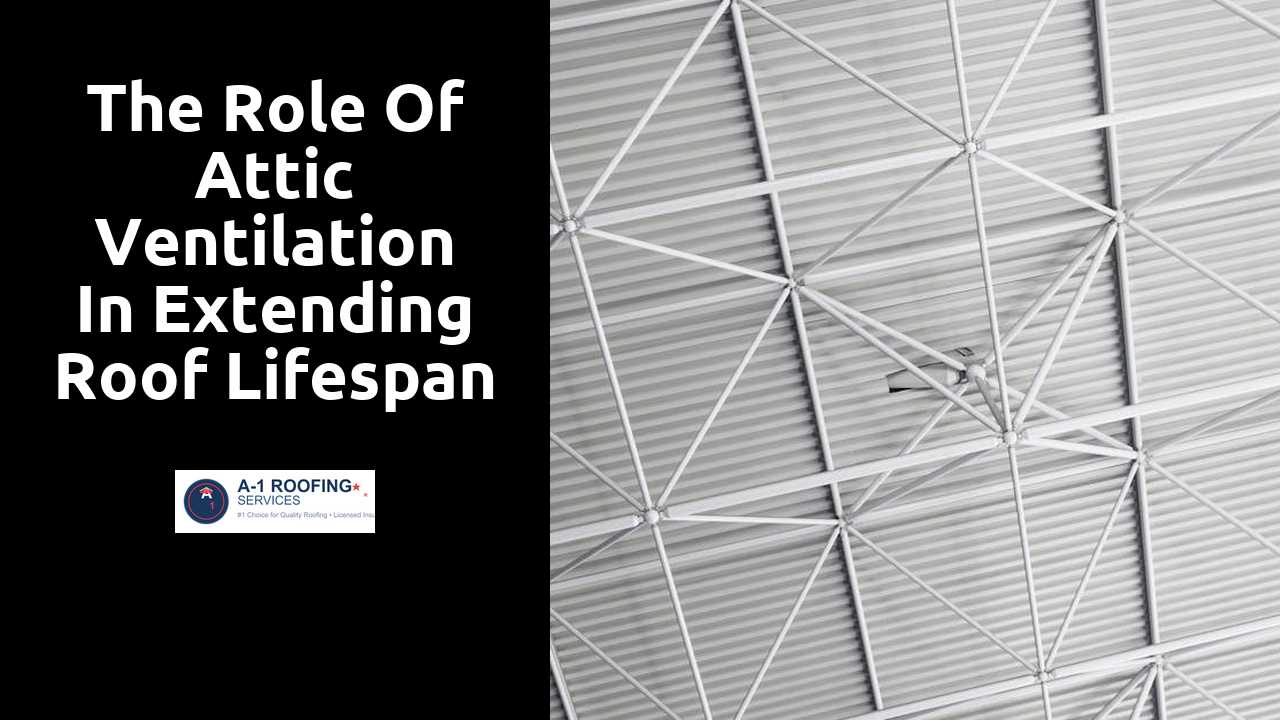
The Role of Attic Ventilation in Extending Roof Lifespan
Table Of Contents
Choosing the Right Ventilation System
Selecting the appropriate ventilation system for an attic involves understanding the unique characteristics of your home and its environment. Evaluating the size and layout of the attic is crucial. Ensuring that there is ample airflow to prevent moisture buildup and heat retention will help maintain roof integrity. Consider both intake and exhaust options. Proper balance is key for optimal performance.
It's important to weigh different types of systems available, such as passive and active ventilation. Passive systems rely on natural airflow, using vents to create a flow path, while active systems utilize fans to enhance air movement. Each option has its own installation requirements and maintenance needs. Assess local building codes and guidelines as well since they may dictate specific requirements for attic ventilation in your area.
Check out this site for more information.
Factors to Consider
When selecting an attic ventilation system, it is crucial to evaluate the overall layout of your home. The size of the attic space plays a significant role in determining the type and quantity of ventilation required. A larger attic may need a combination of ridge vents, soffit vents, or gable vents to promote optimal airflow. Additionally, considering the roofing material can influence the decision, as certain materials might require specific ventilation solutions to prevent heat build-up and moisture accumulation.
Another vital factor revolves around local climate conditions. Homes in humid regions may need a different ventilation strategy compared to those in dry areas. Excess moisture common in humid climates calls for effective exhaust ventilation to reduce humidity and prevent mold growth. Conversely, in dry climates, the focus can shift towards ensuring adequate airflow without excessive heat loss. Balancing these elements will help in creating a ventilation system that is tailored to specific environmental challenges, ultimately safeguarding the roof's lifespan.
Maintenance Tips for Attic Ventilation
Regular inspections are crucial for maintaining the efficiency of attic ventilation systems. Homeowners should aim to check the vents at least twice a year, ideally during the spring and fall. This allows for the detection of blockages from debris, such as leaves, dust, or nests from small animals. Ensuring that the vents are clear promotes proper airflow and helps to maintain an ideal temperature in the attic space, reducing potential issues related to moisture and heat buildup.
Cleaning the vents is equally important to maximize their effectiveness. Using a vacuum or soft brush is recommended to clear away any accumulated dirt or blockages. Additionally, it's wise to check for any signs of wear or damage during these inspections. Damaged vents may need to be repaired or replaced to ensure continued optimal performance. Regular maintenance not only extends the lifespan of the ventilation system but also contributes to the overall health of the roof and attic.
Regular Inspections and Cleanings
Keeping attic ventilation systems in good working order requires consistent inspections and cleanings. Dust, debris, and even pests can accumulate on vents and fans, obstructing airflow and reducing efficiency. Regular checks help catch potential problems early, ensuring that these systems contribute effectively to the temperature regulation in the attic space. It is advisable to conduct inspections at least twice a year, ideally before and after the most extreme seasons.
Cleaning involves removing dirt and blockages from vents, as well as checking for any signs of wear or damage to the components. A thorough cleaning process typically includes vacuuming, washing vent screens, and tightening any loose hardware. In addition to enhancing airflow, proper maintenance can also help prevent issues like moisture buildup, which can lead to mold growth and structural damage over time. Routine maintenance contributes to a longer lifespan for both the ventilation system and the roof itself.
Impact of Climate on Ventilation Needs
Climate plays a significant role in determining the ventilation requirements for an attic space. In regions with hot, humid summers, adequate ventilation helps dissipate heat that can accumulate, preventing damage to roofing materials and reducing energy costs associated with air conditioning. Conversely, areas subject to heavy snowfall and cold temperatures necessitate a different approach. Proper airflow can help regulate moisture levels, preventing ice dams that may cause leaks and costly repairs.
Understanding the specific climate conditions in your area is essential for effective ventilation system selection. Homeowners in arid climates may benefit from different ventilation strategies compared to those living in more temperate zones. Local weather patterns dictate how humidity and temperature fluctuate throughout the year. Tailoring ventilation solutions to fit these patterns not only enhances the performance of the roof but also contributes to the overall longevity of the home.
Tailoring Solutions for Different Environments
Understanding the specific climate and weather patterns of an area is essential for effective attic ventilation. Hot, humid climates may require different solutions than cold, dry regions. In warmer areas, ventilation strategies should focus on maximizing airflow to reduce heat buildup. This can include gable vents, ridge vents, or exhaust fans to help maintain a cooler attic temperature. Conversely, in colder climates, the priority shifts to preventing moisture buildup from condensation. Therefore, ensuring that the attic is properly insulated and utilizing intake vents can mitigate issues related to ice damming and moisture-related damage.
Different environments also dictate the material choices for ventilation systems. Coastal regions may necessitate corrosion-resistant materials due to salty air, while urban settings might need noise-reducing options to combat city sounds. Local flora and fauna can influence the types of ventilation systems that should be utilized as well. For instance, areas with abundant tree cover may require more frequent cleaning of vents to prevent blockage from leaves and debris. Understanding these regional characteristics allows homeowners to implement tailored solutions that enhance the effectiveness and longevity of their roof systems.
Related Links
Benefits of Continuous Roof Ventilation for HomeownersInstallation Steps for Ridge Vents in Roof Systems